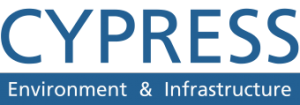Transportation engineering is a pivotal branch of civil engineering. This field revolves around planning, designing, and construction of transportation infrastructure. It also helps with the management and maintenance of systems that facilitate the movement of people and goods. This article explores the core concepts that define what is transportation engineering and its essential role in our contemporary society.
Transportation engineering impacts everything from daily commutes to trade networks. Whether you’re commuting by car, train, plane, or ship, transportation engineering ensures efficient, safe, and sustainable travel.
Join us as we navigate this field and understand the role of transportation engineering in shaping our modern interconnected world.

What Is Transportation Engineering?
At its core, transportation engineering focuses on the seamless movement of people and goods. It applies science and engineering to design, build, and operate transportation systems. This includes roads, bridges, railways, and airports.
Transportation engineering enhances system performance, safety, and sustainability. It impacts a wide range of transportation modes, including automobiles, mass transit, aviation, maritime transportation, freight transport, and more.
This field draws from a diverse range of knowledge domains. This includes planning, computer science, operations research, physics, and material science. Its primary objective is to address real-world mobility challenges through innovative design solutions.
Planning and design
We at Cypress Environment & Infrastructure pay close attention to planning and designing transportation systems. We analyze traffic patterns, conduct surveys, and assess regional needs. This allows us to develop comprehensive transportation plans.
Our engineers create road networks that optimize traffic flow, minimize congestion, and enhance accessibility. We also consider factors like urban development, public transportation integration, and environmental impact when planning transportation systems.
Harnessing emerging technologies
At Cypress, we embrace innovative technologies like Geographic Information Systems (GIS) and computer-aided design (CAD) tools. These tools aid us in the planning and designing processes. These advanced tools allow us to create detailed digital models of transportation networks.
This facilitates precise traffic simulations and accurate assessments of environmental impact. By leveraging these technologies, our engineers can make well-informed decisions that result in more efficient and sustainable transportation systems.
Traffic engineering
Traffic engineering is a transportation engineering subfield. It focuses on optimizing traffic flow and mobility on roads and networks.
Our traffic engineers use mathematical modeling, probability, driver analytics, and simulations to analyze patterns and volumes. This helps design appropriate infrastructure like road segments, intersections, signs, and control systems. It helps regulate vehicle and pedestrian movement safely and efficiently.
Adaptive systems like intelligent traffic lights are also part of traffic engineering. These lights respond to real-time congestion.
Innovative traffic solutions
Our traffic engineers have a robust toolkit to accomplish our analysis and design missions. For example, roadway sensors collect vehicle data for illumination, video systems shed light on intersection patterns, and modeling software simulates traffic forecasts and optimized roadways.
As autonomous vehicles proliferate, we also plan high-tech infrastructure enabling vehicle-to-infrastructure communication. By embracing cutting-edge advancements, we develop smarter transportation systems to maximize safety and mobility.

Transportation infrastructure
From roads and bridges to railways and airports, transportation infrastructure forms the backbone of our transportation networks. For new infrastructure, we can help you plan alignments, design technical elements, perform cost/benefit analyses, oversee construction, and implement safety features.
Managing and enhancing existing infrastructure
For existing infrastructure, we focus on inspection, maintenance, upgrades, and restoration to optimize performance and extend service life.
We also provide expertise to resolve issues from wear and damage. Transportation engineering deliverables include infrastructure drawings, specifications, maintenance recommendations, and more.
Integrating emerging technologies
We actively participate in the integration of emerging technologies into transportation infrastructure. With the advent of smart cities and the Internet of Things (IoT), we are also tasked with incorporating intelligent systems into transportation networks.
These systems can include real-time traffic monitoring, automated toll collection, and adaptive traffic signal control, all of which improve the efficiency and safety of transportation systems.
By seamlessly blending traditional engineering principles with cutting-edge technology, we contribute to the creation of a more resilient and responsive transportation infrastructure for the future.
Sustainable transportation
Creating transportation networks that are environmentally and socially sustainable is an increasing priority. We make sustainability a focus area in our designs and planning.
Implementing sustainable design strategies
Several strategies help minimize the environmental impact of transportation systems. Reducing private car use and expanding mass transit options can lower emissions and pollution. Engineered elements like sound barriers, emission controls on vehicles, and green stormwater infrastructure also mitigate environmental effects.
Additionally, using construction materials with recycled content and longevity reduces waste. Right-of-way native planting and landscaping decrease maintenance needs. Specifying electric vehicles for transit fleets promotes cleaner air as well.
By implementing these and other sustainability best practices, we at Cypress create an infrastructure that protects the planet.
Building connected, accessible infrastructure
We aim to create an equitable, accessible infrastructure that connects communities. We design infrastructure solutions tailored to the local community setting and requirements.
Accessibility considerations range from sidewalks to audible pedestrian crossing signals and ADA-compliant transit. By enhancing access and promoting connectivity, we help create cohesive, environmentally sustainable transportation networks.
Safety and risk assessment
Safety is a top priority within transportation engineering. We use data analysis, modeling, standards compliance, and traffic studies to identify hazards across road, rail, aviation, and maritime networks. We also implement design improvements like sightline expansion, visible warning signage, speed regulation, and dedicated lanes to mitigate risks.
Regular safety inspections, preventative maintenance, and infrastructure rehabilitation further enhance public well-being. Security considerations like surveillance systems, access control, and emergency response preparedness also fall under the transportation engineering safety domain.
Proactive safety enhancements
Our transportation engineers implement various design enhancements like widened sightlines, improved signage, regulated speeds, and dedicated lanes to minimize risks proactively.
By minimizing risks through continual assessment and proactive improvements, our transportation engineers protect the well-being of travelers and communities. Our diligence across all transportation modes helps prevent collisions, contain system failures, and save lives every day.
Ongoing safety management
Regular inspections, preventative maintenance, and rehabilitation coupled with security measures like surveillance and emergency preparedness help manage safety continually over the infrastructure lifespan.

Conclusion
Transportation engineering encompasses a wide array of planning, design, construction, operations, and maintenance activities. Transportation engineering shapes our airports and highways, transit systems and train networks, harbors, and canals.
Technical expertise and vision of seamless mobility and connectivity underpin safe, sustainable, and efficient transportation worldwide. So, what is transportation engineering? It is the driving force behind our modern and interconnected transportation networks.
